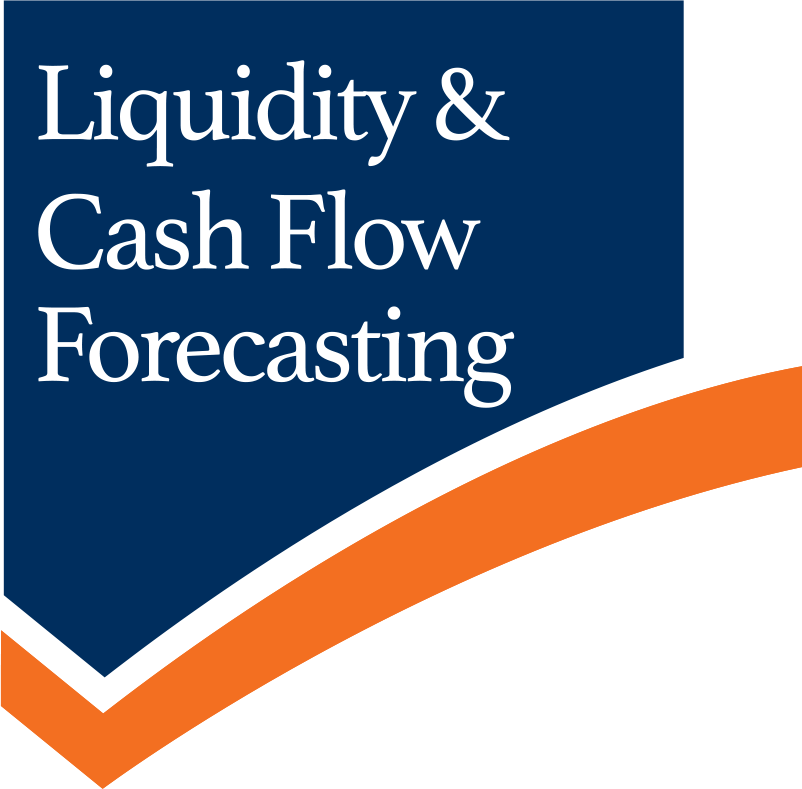
Liquidity & Cash Flow Forecasting
Liquidity & cash flow forecasting" Module is part of "Certified Credit Risk Officer (C-CRRO)" and "Certified Credit Controller" training programs.
Description
Target Audience
-
Chief Financial Officers, Credit Rating Managers, Accountants, Financial advisors and Financial analysts
-
Entrepreneurs with moderate experience in the preparation of financial models, who wish to improve their skills in financial decision making.
-
Financial controllers, Working capital managers, treasury professionals
-
Business development managers
Subject Areas
- Accounting for cash, motives behind the Increasing regulatory emphasis on cash flow-based lending
- Why cash flows matter to managers and to debt and equity providers
- Why cash flow analysis reveals more than income statement and balance sheet analysis
- The difference between cash flow and profit, identifying Non-cash items and timing differences
- Constructing the cash flow statement
- Analyzing historic cash flow statements
- Performing and interpreting cash flow ratios
- Understanding the priority of cash flows
- Identification and management of cash flow problems
- Explaining the impact of working capital on cash flow
- Preparing cash budgets
- Using sensitivity analysis of a project’s key sales and costs assumptions to assess the impact of risk events on the company’s ability to service debt
- Preparing a financial model
- Developing a financial model to forecast cash flows
- Forecasting techniques (linear regression, non-linear methods).
- Revenues, expenditure, investments, depreciation and amortization, borrowings.
- Indirectly building the Cash Flow Statement
- Practical application involving all subject areas via case studies
What you will learn
- You will become familiar with building the three financial statements (Profit and Loss Account, Statement of Financial Position, and Cash Flow Statement) and interlinking them.
-
You will understand the evaluation method of companies and learn the relevant multipliers and (evaluation) models.
-
You will become familiar with uncertainty management methods by building various scenarios about the future.
-
You will learn how to evaluate the parameters that are more important for specific financial key performance indicators (KPIs) and make remedial decisions to improve them.
-
Recognize the importance and elements of an organization's cash flow and apply ratio analysis.
-
Describe the impact of working capital management on cash flow.
-
Analyze liquidity and the cash flow position of organizations including free cash flow.
-
Review cash flow key presentation topics and apply cash flow forecasting techniques.
-
Understand the difference between the Indirect and Direct methods of cash flow statements.
-
Understand why EBITDA does not spell cash flow and distinguish cash flows from operations, investing and financing.
-
Use of the debt service coverage ratio as the principal credit risk ratio from forecast cash flow analysis.
-
Use proxy ratios (for DSCR) include debt to EBITDA and their limitations.
Seminar Timetable
Date | 1st & 2nd Teaching Hour | Break | 3rd & 4th Teaching Hour |
|---|---|---|---|
27th of November | 18.30 - 20.00 | 20:00 - 20:15 | 20:15 - 21:45 |
2th of December | 18:30 - 20:00 | 20:00 - 20:15 | 20:15 - 21:45 |
4th of December | 18.30 - 20.00 | 20:00 - 20:15 | 20.15 - 21.45 |
6th of December | 18.30 - 20.00 | 20:00 - 20:15 | 20.15 - 21.45 |
10th of December | 18.30 - 20.00 | 20:00 - 20:15 | 20.15 - 21.45 |


Course Start Date
27 of November 2024
Cost of Attendance
- 20 Hours
- Live Online
- Attendance Certificate
Lecturer

Katsikas PhD, FHEA, CMBELecturer in Accounting at Kent Business School
Lecturer in Accounting at Kent Business School, University of Kent
Visiting professor at the University of Bologna, Italy and Kwansei Gakuin University, Japan

Grose PhDAssistant Professor in International Hellenic University
Professor of Finance in the University of London
Senior Research Fellow Hellenic Observatory of Corporate Governance
Chris Grose is an Assistant Professor at the International Hellenic University. He has a PhD in Finance from the University of Macedonia and an MSc in Money, Banking and Finance from the University of Birmingham. He has over 12 years of experience teaching subjects in Finance and Accounting mainly at a postgraduate level. He has extensive online teaching experience with various institutions. He teaches Finance in the Global MBA of the University of London and is a Senior Research Fellow at the Hellenic Observatory of Corporate Governance. Chris does consulting work for public organizations and private firms, while he has over 18 years of experience working for finance departments and consulting firms. His consultancy work focuses on both finance and corporate governance issues as well as in business process restructuring and business consultancy projects for public firms, organisations and SMEs. His broad research interests lie in the areas of corporate finance, institutional investing and corporate governance. His current research agenda focuses more specifically on corporate finance, investments, corporate restructurings and entrepreneurial finance. He has published in the Review of Quantitative Finance and Accounting, the Journal of International Financial Markets, Institutions and Money and the International Review of Financial Analysis amongst other journals.

TsileponisLecturer in Accounting at the University of Bristol
Lecturer in Accounting at the University of Bristol
Dr Nikos Tsileponis is a Lecturer in Accounting at the University of Bristol and serves as the Programme Director for the MSc Accounting and Finance. He earned his PhD in Accounting from Alliance Manchester Business School at The University of Manchester, where he was honoured with scholarships from both the University and the Economic and Social Research Council (ESRC) through the prestigious President’s Doctoral Scholar Award. Nikos’ research reflects a longstanding interest in the areas of market-based accounting, corporate governance, textual analysis and natural language processing. His research has been published in international journals, including Accounting and Business Research and The British Accounting Review. He has been awarded the British Accounting and Finance Association (BAFA) Prize for the “Most outstanding paper published in ‘The British Accounting Review’ during 2020”. Nikos serves as the screening editor for the Journal of International Accounting, Auditing and Taxation (JIAAT) and is on the editorial advisory board of the Sustainability Accounting, Management and Policy Journal (SAMPJ). He is also a Fellow of the Higher Education Academy. Nikos has received grants from the Association of Chartered Certified Accountants (ACCA) and the British Academy (BA/Leverhulme Small Research Grants).


